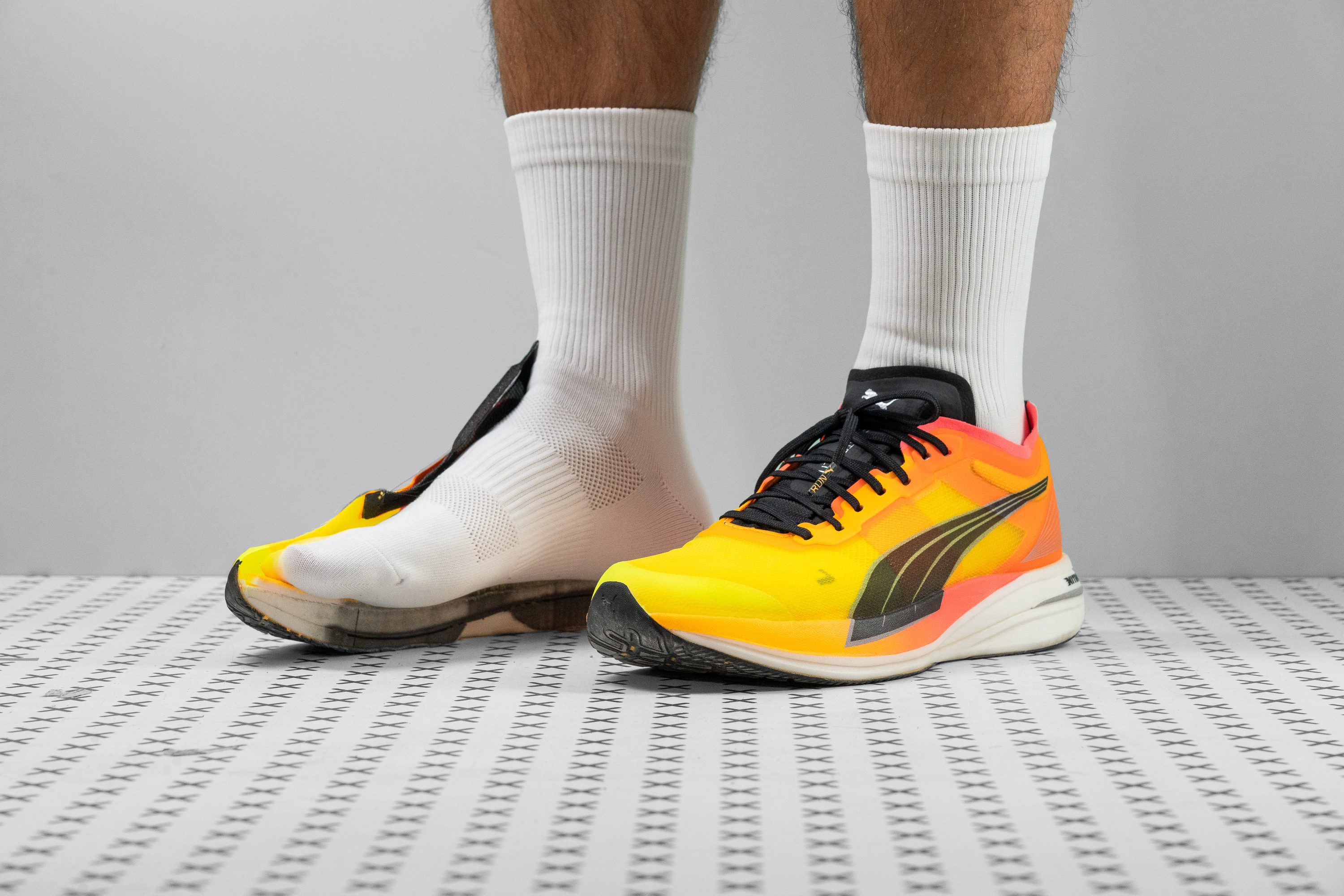Our verdict
Pros
- Stable
- Racer fit
- Natural ride
- Secure heel clutch
- Breathable
- Durable
- Looks amazing
- Fantastic grip
- Soft and bouncy midsole
- Fantastic grip
Cons
- Scratchy upper with subpar durability
- Narrow fit
- Needs more stack height for marathons
- Not enough energy return
Audience verdict
- Top 1% in road running shoes
- Top 12% in PUMA running shoes
Comparison
The most similar running shoes compared
+ + Add a shoe | |||||
|---|---|---|---|---|---|
| Audience score | 93 Superb! | 90 Superb! | 90 Superb! | 81 Good! | |
| Price | £170 | £220 | £195 | £180 | |
| Pace | Competition | CompetitionTempo | CompetitionTempo | CompetitionTempo | |
| Shock absorption | Moderate | - | High | High | |
| Energy return | Moderate | - | High | High | |
| Traction | - | - | High | Moderate | |
| Arch support | Neutral | Neutral | Neutral | Neutral | |
| Weight lab Weight brand | 7.1 oz / 200g 6.7 oz / 190g | 7.4 oz / 210g 8.1 oz / 229g | 7.2 oz / 204g 7.4 oz / 209g | 7.1 oz / 200g 7.4 oz / 209g | |
| Lightweight | ✓ | ✓ | ✓ | ✓ | |
| Drop lab Drop brand | 5.7 mm 8.0 mm | 3.7 mm 0.0 mm | 10.6 mm 8.0 mm | 7.5 mm 8.0 mm | |
| Strike pattern | Mid/forefoot | Mid/forefoot | Heel | Mid/forefoot | |
| Size | True to size | Half size small | True to size | Half size small | |
| Midsole softness | Soft | Balanced | Soft | Soft | |
| Difference in midsole softness in cold | Normal | Small | Normal | Normal | |
| Toebox durability | Bad | Bad | Bad | Decent | |
| Heel padding durability | Good | Good | Good | Decent | |
| Outsole durability | - | Decent | Decent | Good | |
| Breathability | Breathable | Breathable | Moderate | Breathable | |
| Width / fit | Narrow | Medium | Medium | Medium | |
| Toebox width | Narrow | Wide | Narrow | Medium | |
| Stiffness | Stiff | Stiff | Stiff | Stiff | |
| Torsional rigidity | Stiff | Stiff | Stiff | Stiff | |
| Heel counter stiffness | Flexible | Flexible | Flexible | Flexible | |
| Plate | Carbon plate | Carbon plate | Carbon plate | Carbon plate | |
| Rocker | ✓ | ✓ | ✓ | ✗ | |
| Heel lab Heel brand | 31.1 mm 36.0 mm | 33.1 mm 36.0 mm | 39.2 mm 40.0 mm | 32.9 mm 35.0 mm | |
| Forefoot lab Forefoot brand | 25.4 mm 28.0 mm | 29.4 mm 36.0 mm | 28.6 mm 32.0 mm | 25.4 mm 27.0 mm | |
| Widths available | Normal | Normal | Normal | Normal | |
| Orthotic friendly | ✓ | ✓ | ✓ | ✓ | |
| Season | SummerAll seasons | SummerAll seasons | All seasons | SummerAll seasons | |
| Removable insole | ✓ | ✓ | ✓ | ✓ | |
| Ranking | #4 Top 1% | #66 Top 18% | #38 Top 11% | #291 Bottom 21% | |
| Popularity | #356 Bottom 45% | #216 Bottom 41% | #49 Top 14% | #168 Top 46% |
Who should buy
For those immersed in the PUMA universe or seeking a durable racer with excellent grip and stability, we've discovered that the Deviate Nitro Elite emerges as a top-tier option. In our tests, its versatility and plush midsole just shone. We found it's great for everything from short to long intervals, races, and even daily runs if needed.

Who should NOT buy
However, we think that you should steer clear of this PUMA if you:
- have medium-to-wide feet since the toe box is tight. ASICS Metaspeed Sky+ is a roomier alternative
- favour high-stacked shoes for long-distance races—Nike Alphafly 2 is a better choice
- aren't keen on using a carbon plate. Take a look at the ASICS Noosa Tri 14 instead!
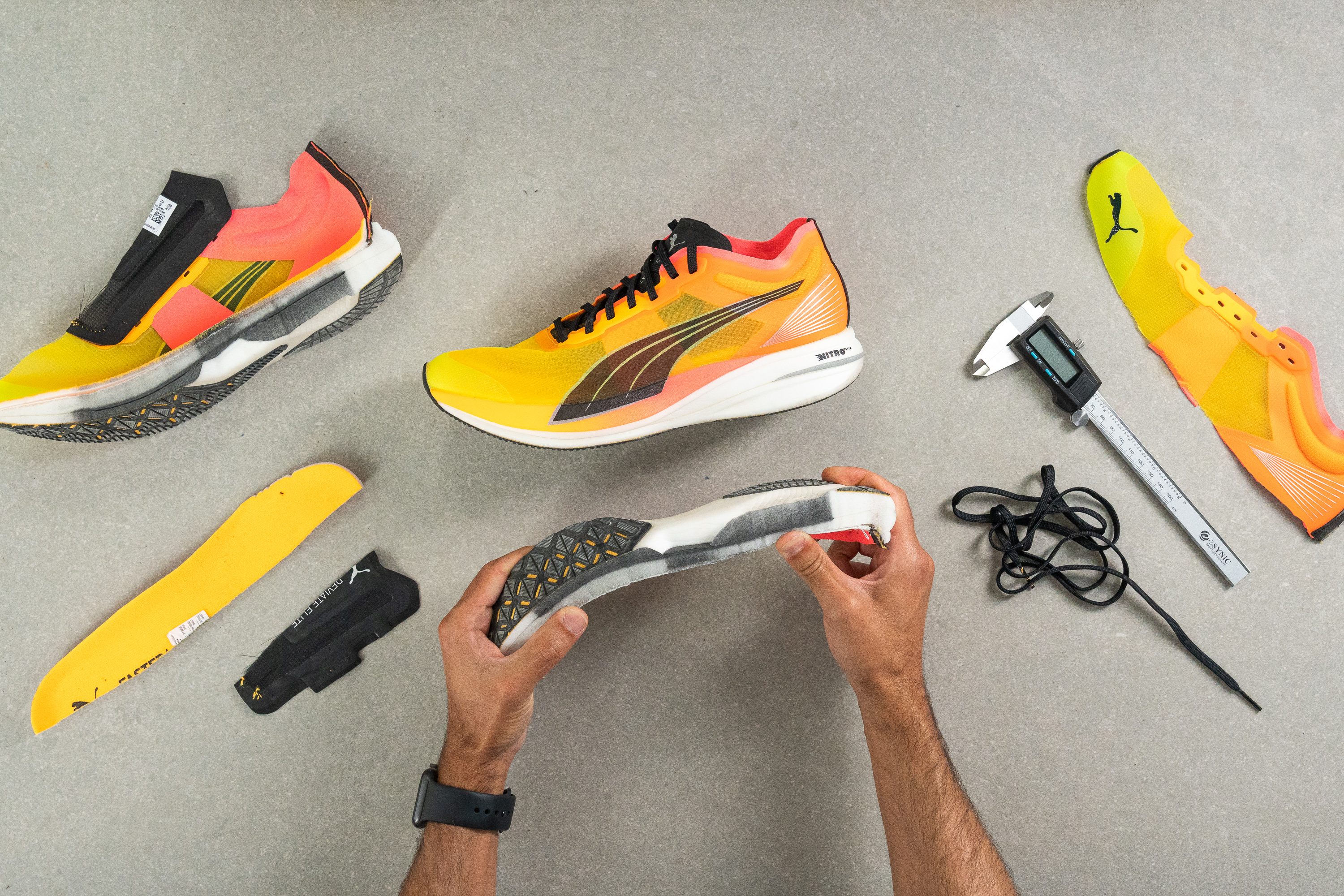
Cushioning
Shock absorption
The Deviate Nitro Elite isn’t built for max-cushioning, as it leans toward a low-profile, speedy design. We measured just 128 SA in the heel and 99 in the forefoot, which may not satisfy marathon-focused runners seeking plush protection. If that worries you, get the Adidas Adizero Adios Pro 4 instead.

| Deviate Nitro Elite | 128 SA |
| Average | 129 SA |
Energy return
Energy return fell slightly short of expectations, especially for a supershoe. We recorded just 62.2% in the heel and 64.8% in the forefoot. That's well below the bounce range we usually see above 70% in the supershoe category.
| Deviate Nitro Elite | 62.2% |
| Average | 58.5% |
Heel stack
Here's a time when our findings deviate considerably from what the brand says. Our meticulous measurements using a calliper revealed a heel height of 31.1 mm, which is substantially lower than stated by PUMA (36 mm).
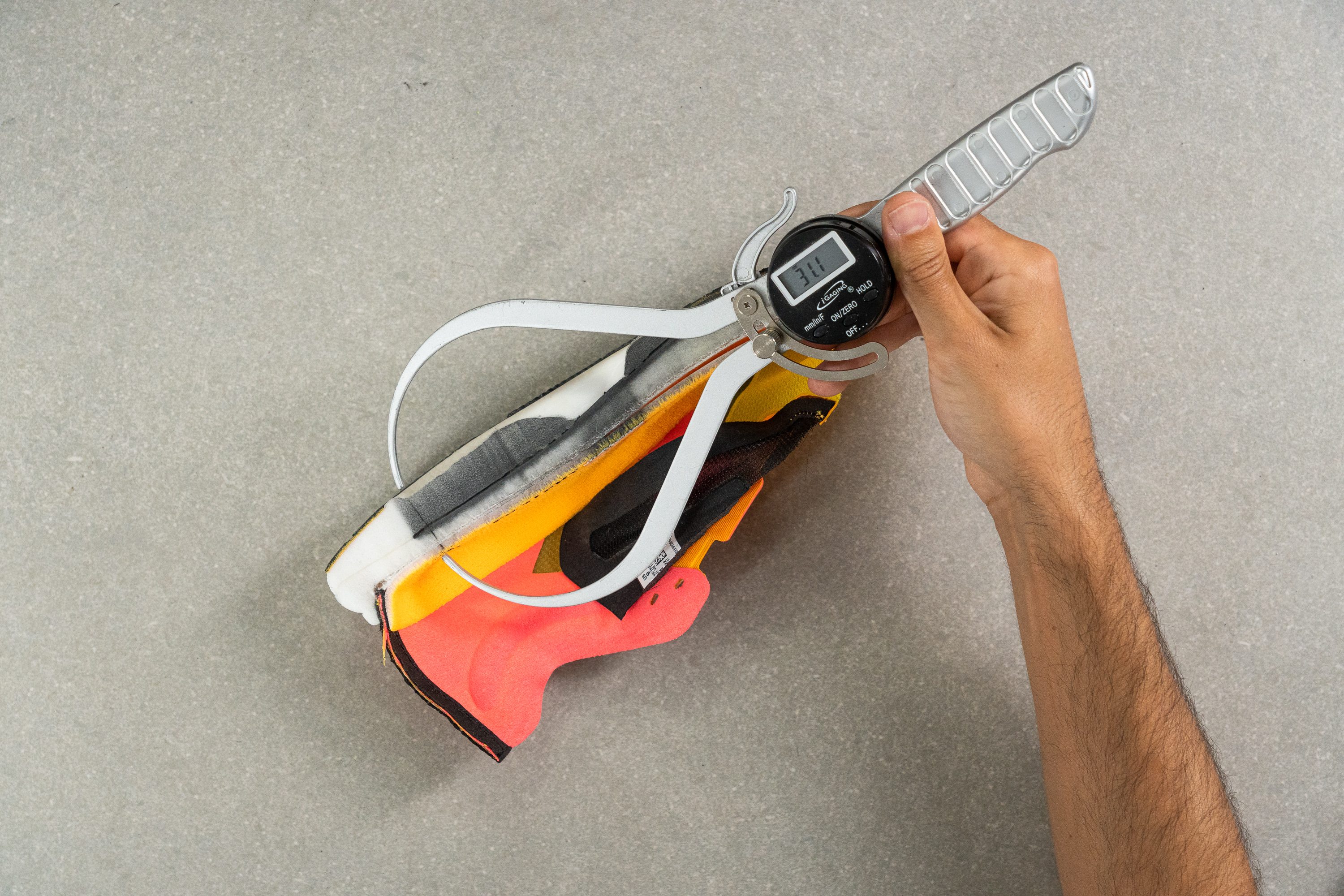
| Deviate Nitro Elite | 31.1 mm |
| Average | 34.8 mm |
Forefoot stack
We ran into a similar problem with the forefoot. PUMA's advertised 28 mm of foam fell short, with our lab measurements revealing only 25.4 mm. While not as huge a discrepancy as in the heel, it's still far from ideal.
For today's marathon-running standards, this under-30-mm thickness seems subpar, especially when most competition shoes boast a foam layer exceeding 30 mm in the same region in order to protect your muscles for the last third of the race.
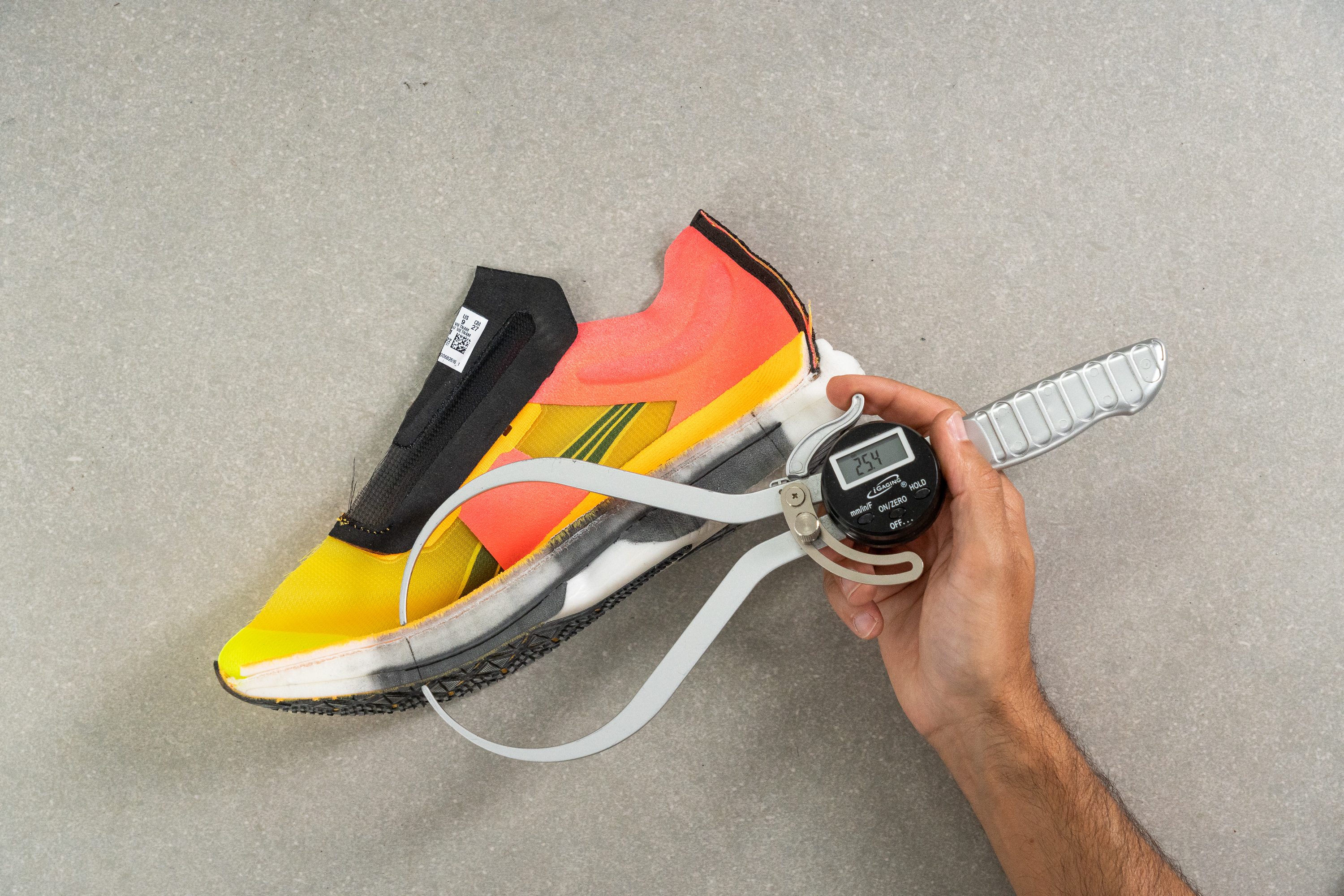
| Deviate Nitro Elite | 25.4 mm |
| Average | 26.2 mm |
Drop
Considering these figures, the stated 8-mm heel-to-toe drop, in reality, measures out to be 5.7 mm.
While this isn't necessarily a drawback—many experienced runners, like midfoot or forefoot strikers, might even find it advantageous—it's essential for us to emphasise that this actual measurement doesn't align with PUMA's advertised specifications.
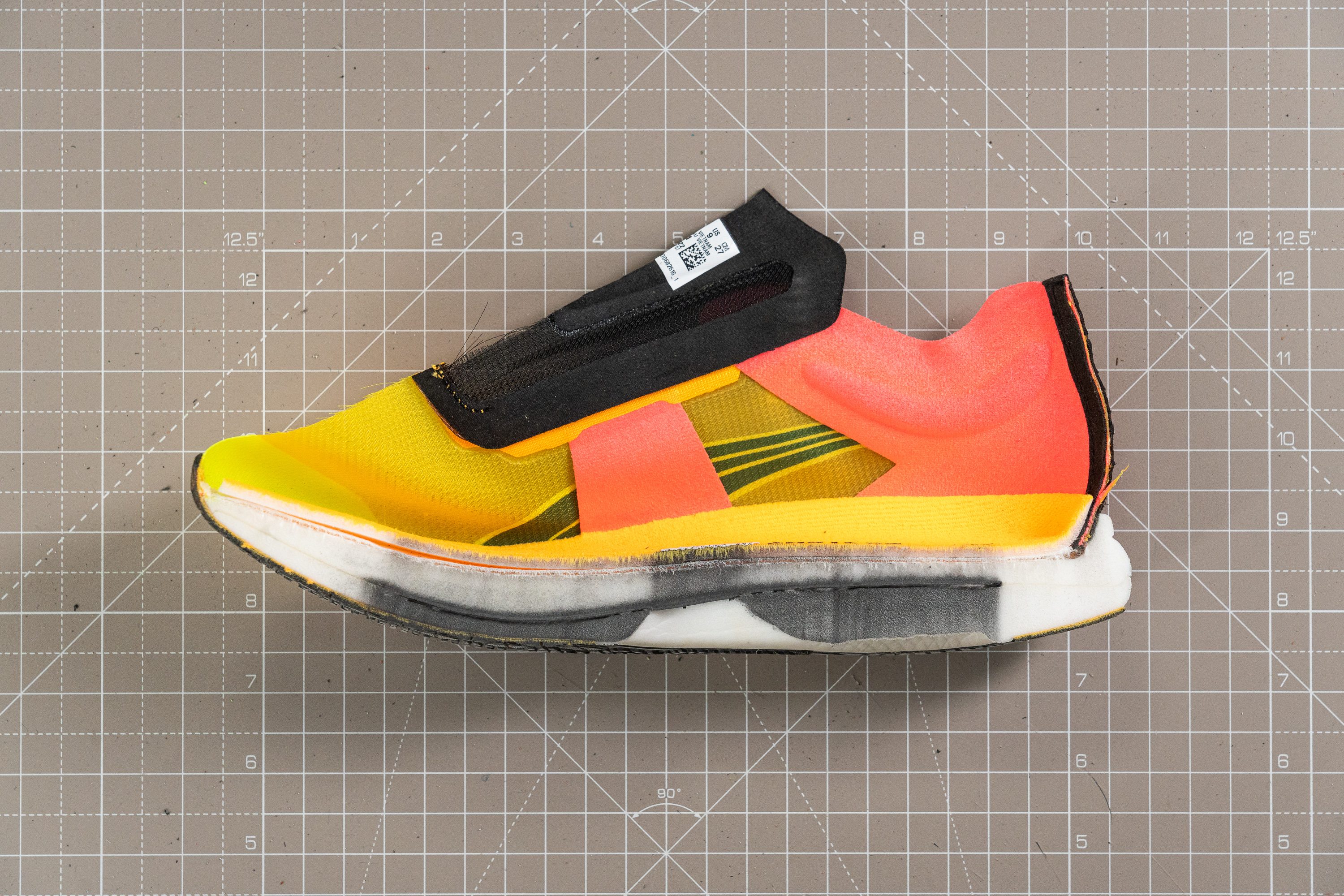
| Deviate Nitro Elite | 5.7 mm |
| Average | 8.6 mm |
Midsole softness
Our durometer tests reveal a pleasantly soft compound in the Nitro Elite foam that we measured at 14.8 HA of softness. This foam is crafted from a mix of PEBA and EVA, and PUMA takes this approach for two different reasons:
- Durability: By adding EVA to the equation, the midsole's lifespan significantly extends.
- Affordability: PEBA, while effective, is really expensive. EVA, on the other hand, is an ultra-cheap foam.
The end product delivers a soft and springy run, although it doesn't quite match the bounce level of the PEBA-only foams found in ASICS or Nike racing shoes.
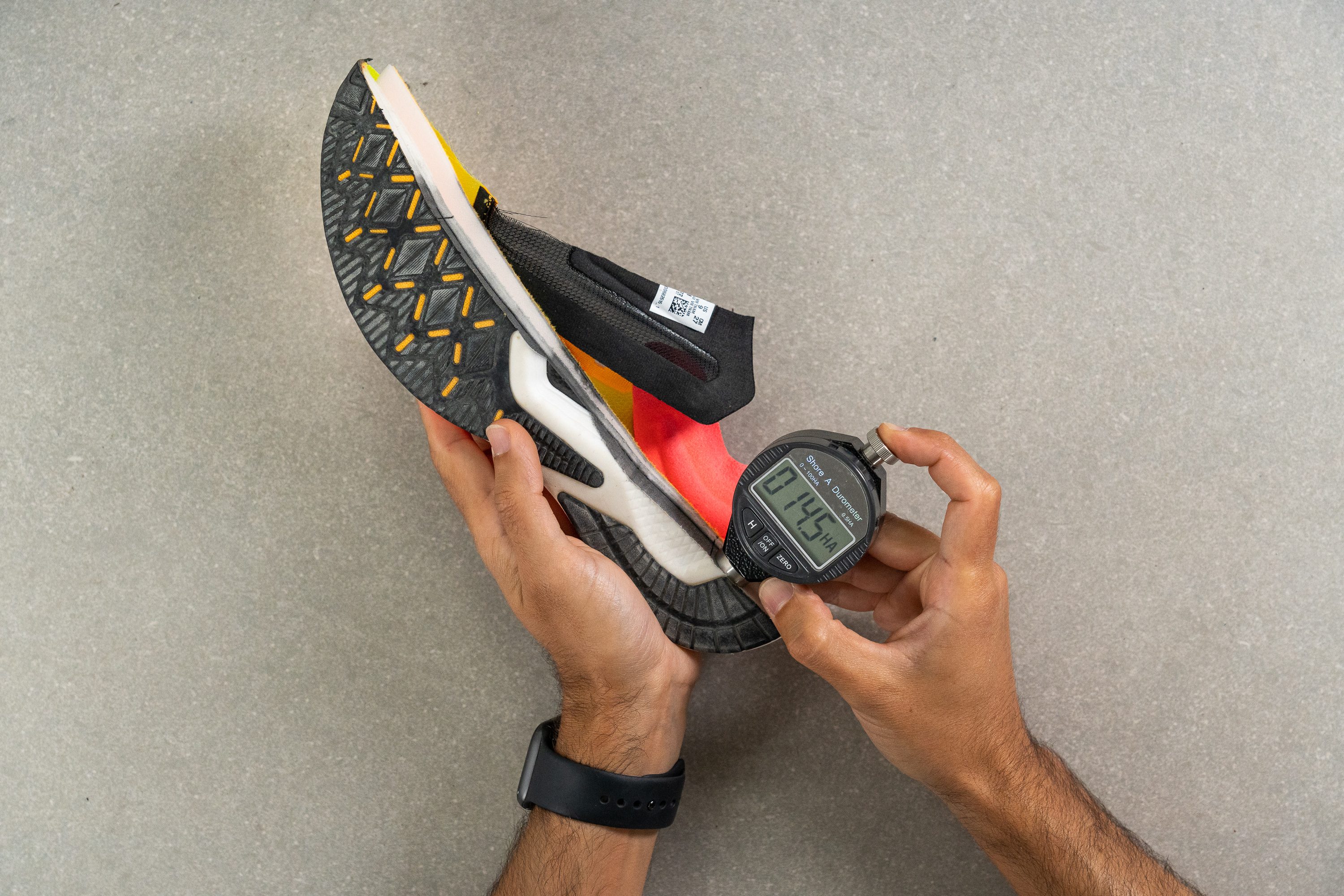
| Deviate Nitro Elite | 14.8 HA |
| Average | 20.4 HA |
Size and fit
Size
PUMA Deviate Nitro Elite fits true to size (32 votes).
Width / Fit
PUMA does another trick here in order to boost stability. We found that they mixed a narrow upper (91.6 mm) with a wide midsole, thus obtaining an stable and solid ride. However, there's a catch—it leaves less room inside the shoe. And that's a problem for many of us.
Our testing reveals that runners with medium-to-wide feet might find this shoe a bit tight, while those with narrow or narrow-to-medium feet will likely find them comfortable for racing.
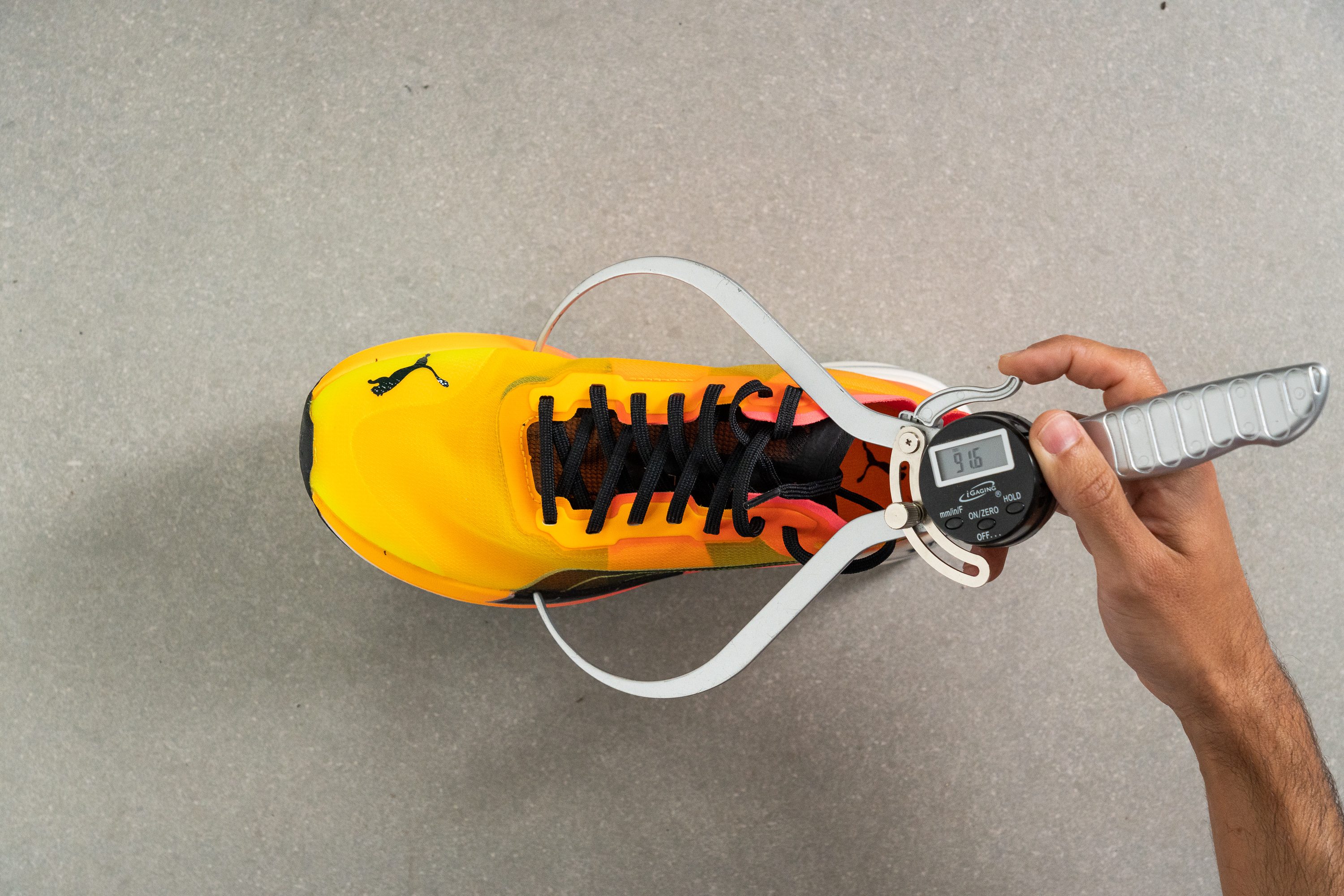
This test follows an older methodology, which is why you don't see recently tested shoes in the chart. Results from different methodologies can not be compared.
| Deviate Nitro Elite | 91.6 mm |
| Average | 98.5 mm |
Toebox width
In an interesting move to add a bit of extra space in the toebox—and trying to please more runners despite its narrow toebox—the German brand designed the big toe area to mimic most training shoes. It's almost the average size at 72.8 mm, and that's a good thing.
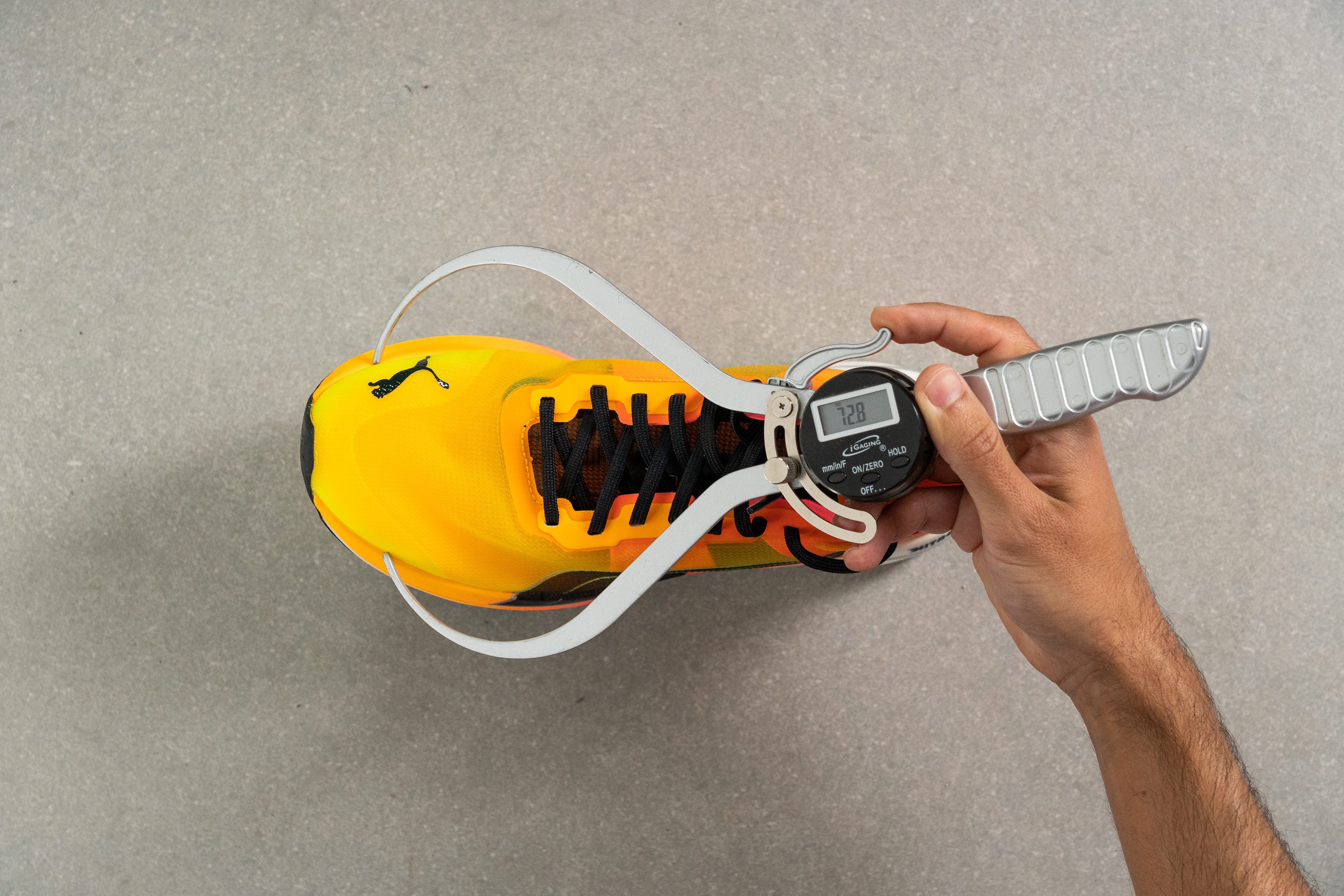
This test follows an older methodology, which is why you don't see recently tested shoes in the chart. Results from different methodologies can not be compared.
| Deviate Nitro Elite | 72.8 mm |
| Average | 78.4 mm |
Flexibility / Stiffness
Here's the deal. Running shoes with carbon plates are fantastic for racing, but they can be uncomfortable for everything else. That's why companies are introducing nylon plates in training shoes that aren't as rigid, yet still provide some carbon plate benefits.
Well, after our flexibility test, we found that the Deviate Nitro Elite, with its "PWRPLATE" carbon plate, finds itself squarely in between these two at 41N. It's significantly less rigid than your average racing speedster, but it's also firmer than the typical shoe and the majority of nylon-plated ones.
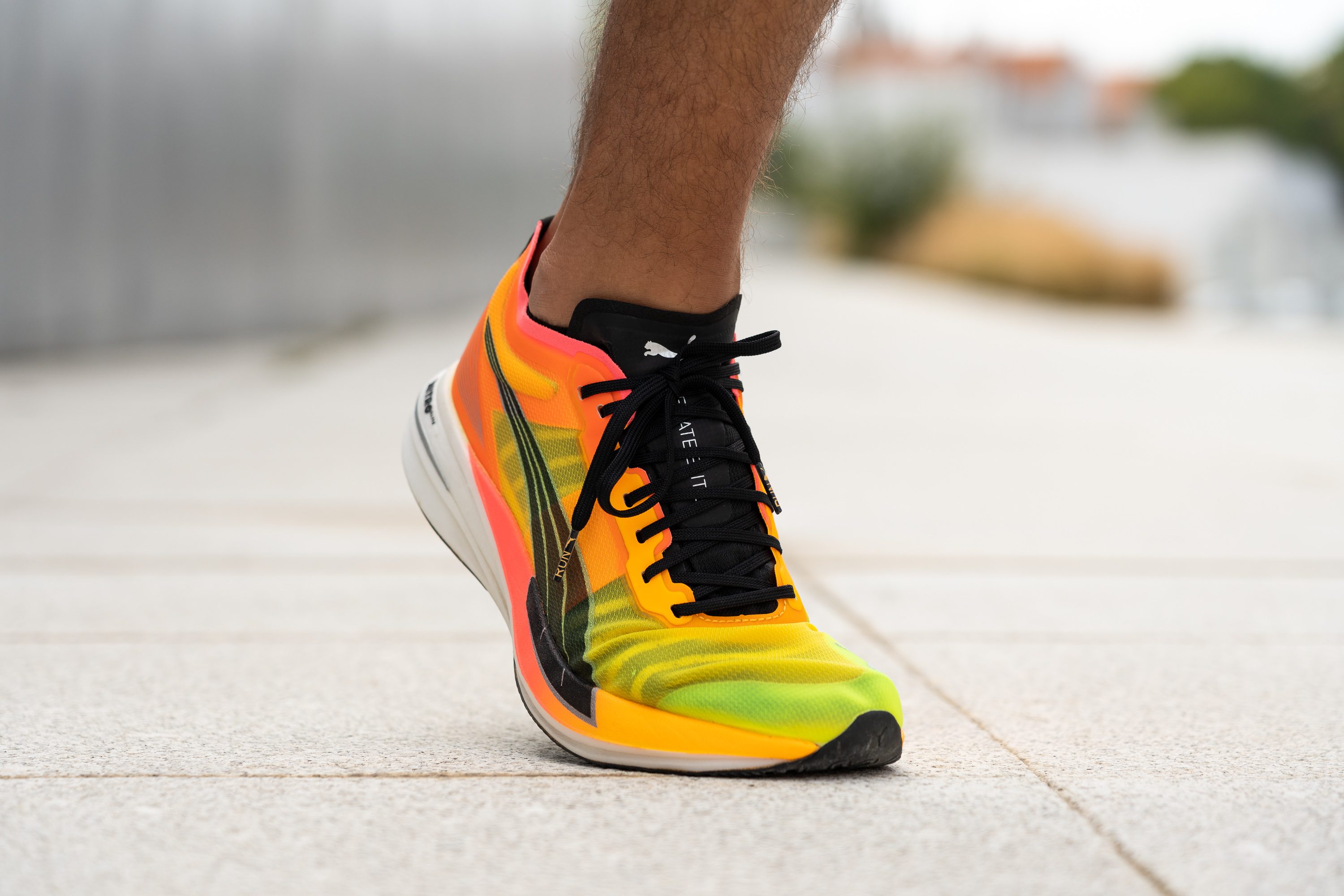
This is important because not all runners prefer ultra-stiff running shoes—like those one with metatarsalgia—or perhaps you're searching for a versatile shoe suitable for both training and racing. If that's the case, this shoe strikes the perfect balance.
This test follows an older methodology, which is why you don't see recently tested shoes in the chart. Results from different methodologies can not be compared.
| Deviate Nitro Elite | 41.0N |
| Average | 28.1N |
Stiffness in cold (%)
The same scenario that we experienced about midsole softness happened with the Deviate Nitro Elite regarding stiffness. When we tested it in cold conditions, it exhibited a slightly more rigid behaviour at 57.3N, being less pleasant.
At 39.8% of change, the Deviate is keeping in line with the whole PEBA+EVA foam behaviour. We were gearing up for a typical, nothing-to-write-home-about change aaaand bingooo—that’s what we got!
Definitely not the world-class result that you should expect from a £200 shoe.
| Deviate Nitro Elite | 40% |
| Average | 33% |
Weight
The Deviate Nitro Elite from PUMA doesn't just feel light—it's incredibly featherweight. Weighing a mere 7.1 oz (200g), it's a whopping 34% lighter than the average running shoe.
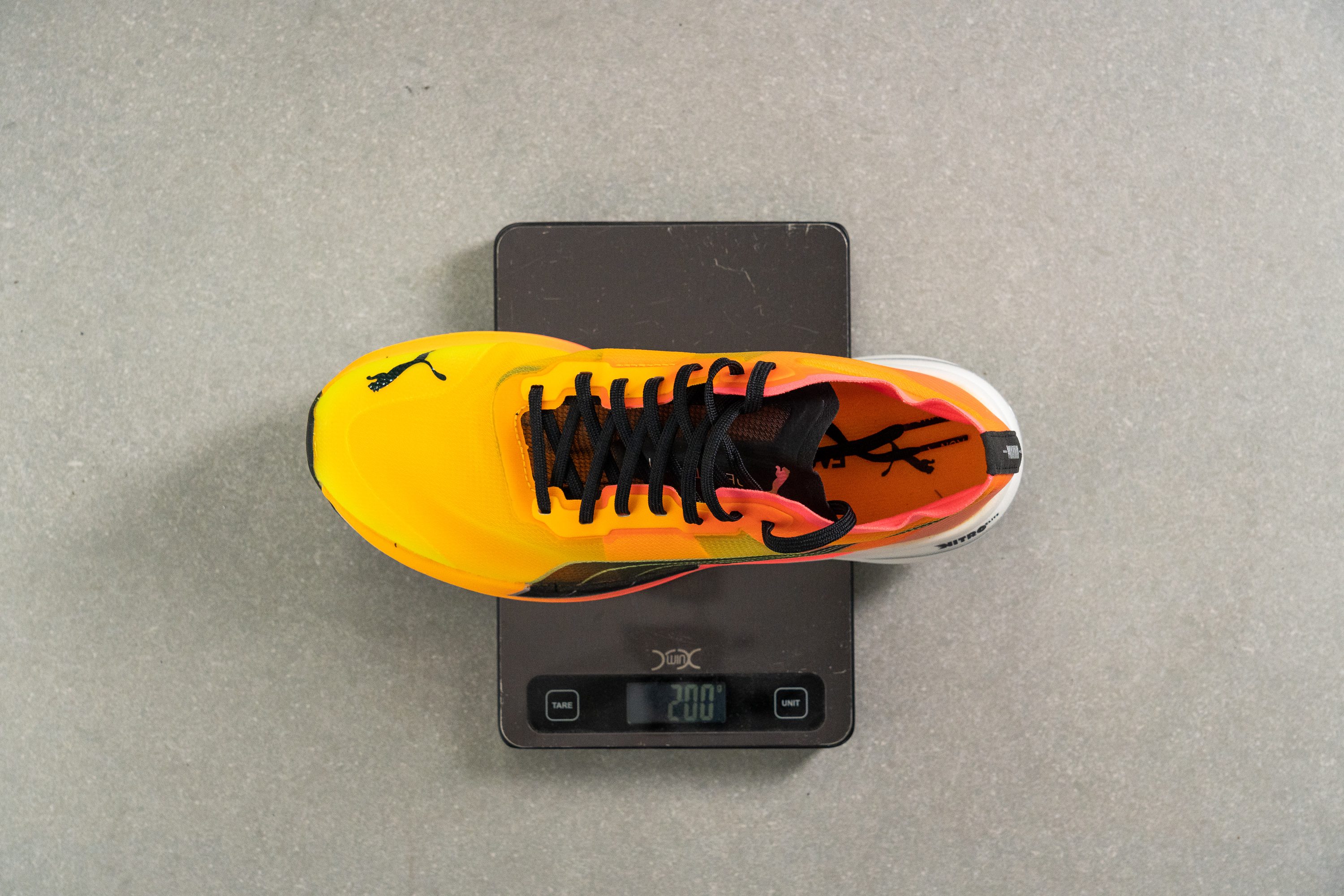
| Deviate Nitro Elite | 7.1 oz (200g) |
| Average | 9.3 oz (264g) |
Breathability
The moment we picked up the shoe in our lab, we immediately sensed its fantastic airflow. Its upper, made of a plasticky material, breathes with minuscule holes that encourage airflow and effortlessly release heat.
Even under a crazy heatwave, running in this shoe resulted in neither blisters nor discomfort. The Deviate Nitro Elite it's definitely a safe bet even for our wild 20-mile summer long runs.
The Deviate Nitro Elite design goes above and beyond, not only dissipating heat through the tongue area—like most running shoes—but also delivering superior airflow in its toe box, which is a must for long distance shoes.
The upper looked ultra-thin and almost transparent when exposed to light in our lab.
Now, let's move to one of our favourite tests: the microscope.
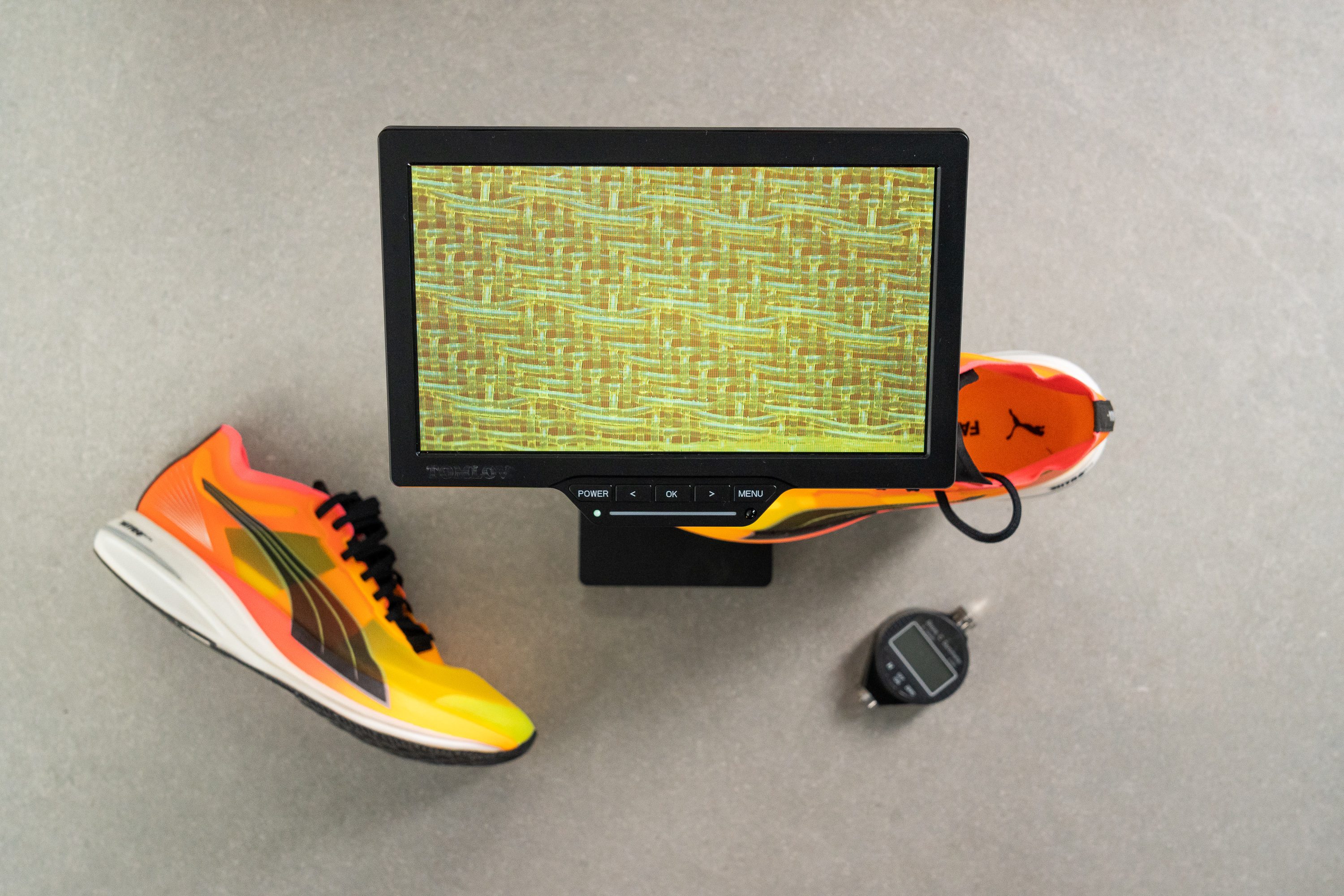
The breathability secrets of the Deviate Nitro Elite reveal themselves under our microscope. As you can observe, thousands of ventilation holes result from the unique threading of this synthetic mesh. Air and heat can escape without any issue.
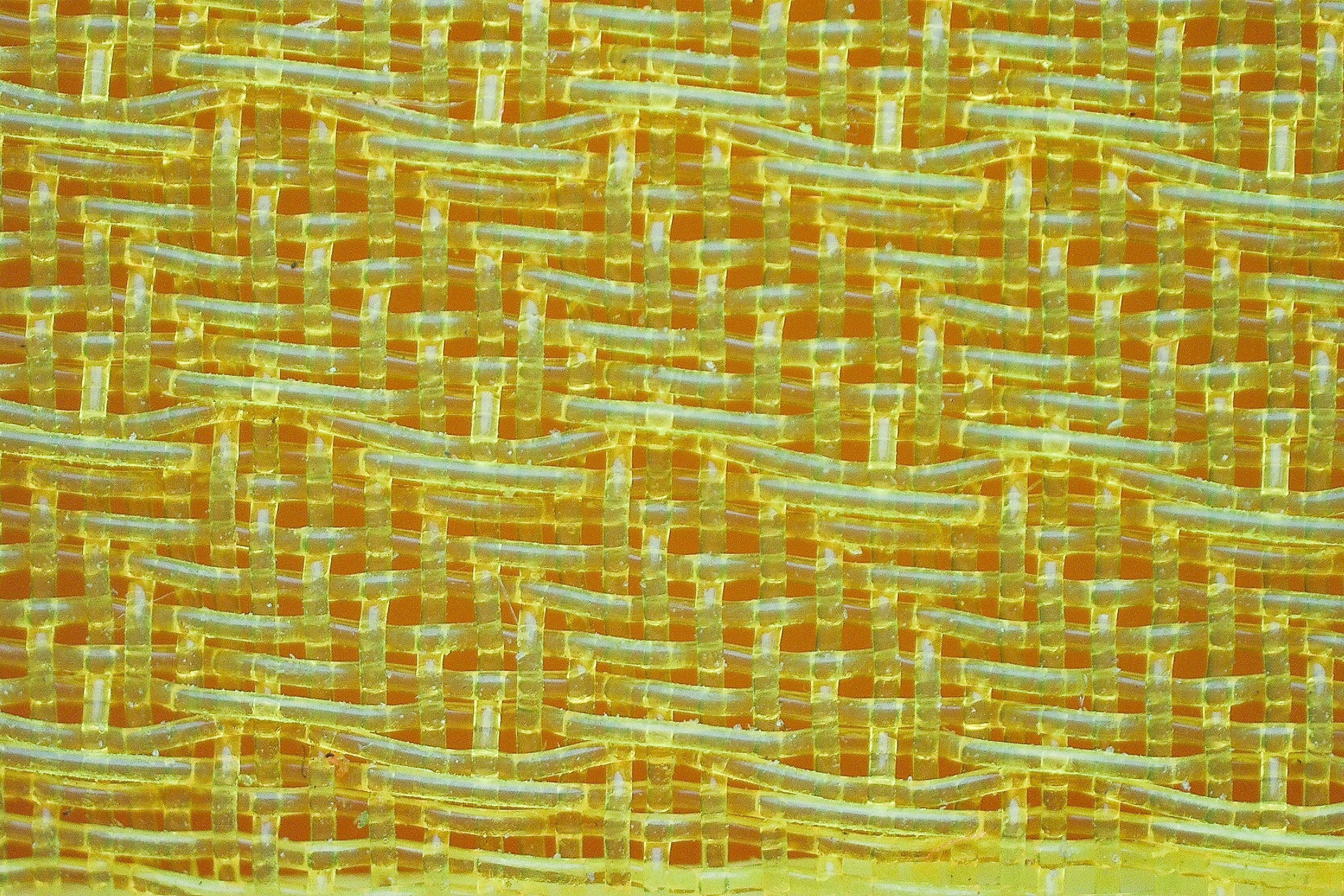
| Deviate Nitro Elite | 5 |
| Average | 3.7 |
Stability
Lateral stability test
The stability of the PUMA Deviate Nitro Elite stands as one of its most noteworthy features when compared to other racing shoes. Contrary to our initial expectation of the typical instability found in racing shoes, we were greeted with a pleasant surprise by its secure ride.
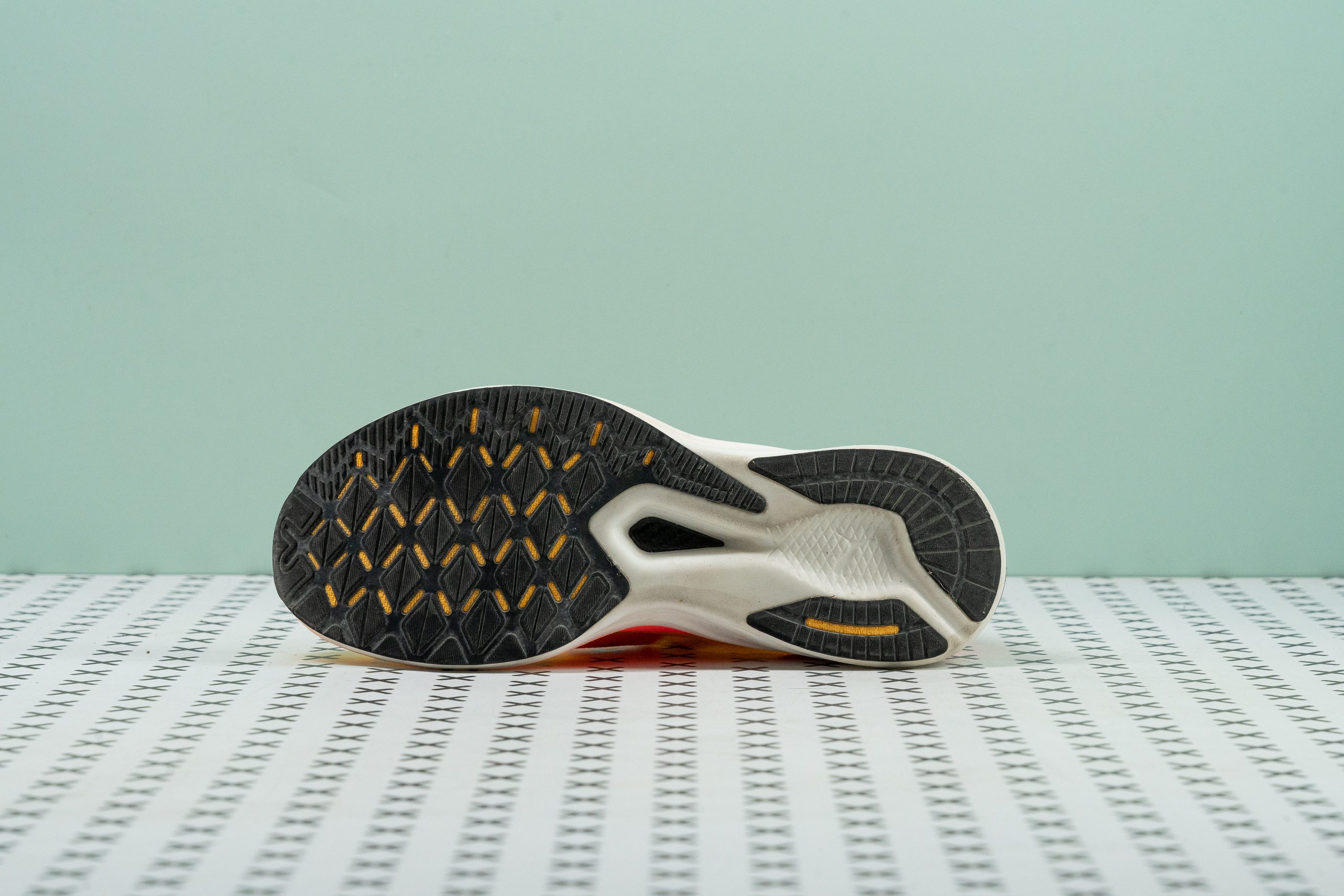
PUMA has incorporated design elements from daily training shoes into this racer to enhance stability. The noticeably wide midfoot, unusual for a racing shoe, is evident in the photo above. Its similarity to the Deviate Nitro 2—a training shoe—is pretty obvious.
Torsional rigidity
Whenever we encounter shoes with carbon-fibre plates in our lab, we anticipate a maximum level of rigidity. True to our expectations, this shoe delivers a 5/5 in our manual assessment.
| Deviate Nitro Elite | 5 |
| Average | 3.5 |
Heel counter stiffness
This test shows the total opposite of the last one. Heel counters in racing shoes are usually flexible, especially with plastic-like materials like the ones in the Adidas Adizero Adios Pro 2.0 or this PUMA. So, the lowest score possible (1/5) is what the Deviate Nitro Elite ended up with.
If you experience any kind of heel slippage, try an alternative lacing technique.
| Deviate Nitro Elite | 1 |
| Average | 2.9 |
Midsole width - forefoot
Although the Deviate Nitro Elite is slightly narrower than the average shoe, at 109.8 mm we still view it as wide for its purpose. This smart tactic from the German brand enhances stability and positions the shoe competitively against its rivals, making it a clear selling point for many long distance runners.

| Deviate Nitro Elite | 109.8 mm |
| Average | 114.4 mm |
Midsole width - heel
This theme continues to the back of the shoe, where we found that, at 84.7 mm, it's 7.7 mm wider than the Adidas Adizero Adios Pro 2.0 and a jaw-dropping 9.7 mm wider than the Vaporfly Next% 2.
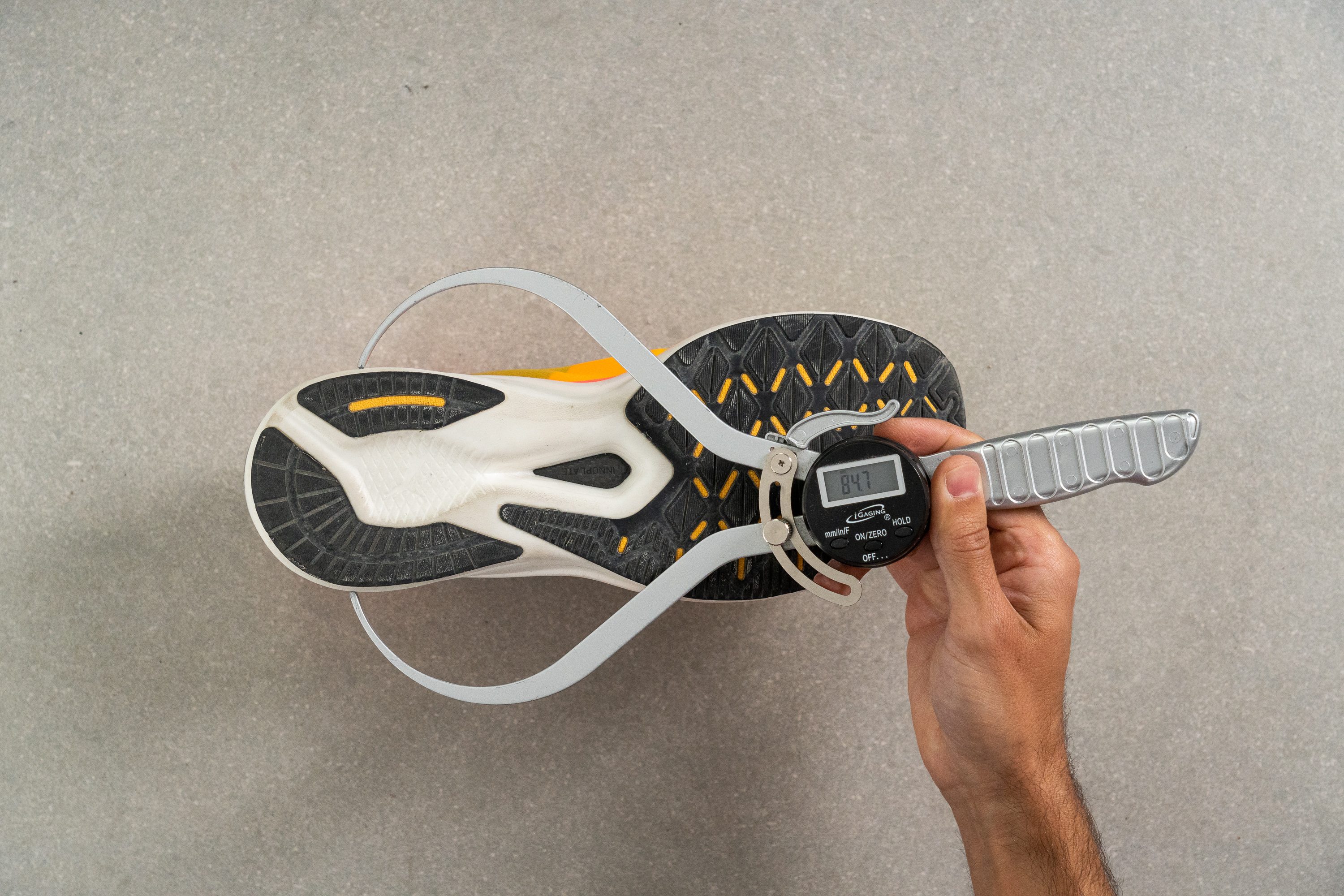
| Deviate Nitro Elite | 84.7 mm |
| Average | 90.7 mm |
Durability
The Deviate Nitro Elite from PUMA doesn't just feel light—it's incredibly featherweight. Weighing a mere 7.1 oz (200g), it's a whopping 34% lighter than the average running shoe.
Toebox durability
Aside from a few exceptions, a thin mesh intended for racing typically implies that the upper isn't overly resistant to abrasion.
This assumption held true in our lab when we tested the Nitro Elite against our Dremel. The machine made one of the largest holes we've ever seen in this test. Unfortunately for PUMA, that results in a score of just 1 out of 5 from us.

The Nike Alphafly Next% 2 is one of those exceptions. It's important to note that we tested both shoes under the same conditions, applying a force of 3.2N at 10K RPM.
| Deviate Nitro Elite | 1 |
| Average | 2.6 |
Heel padding durability
Contrary to the upper, the heel tells a more impressive tale. The sturdy material PUMA uses to protect the heel collar stood up remarkably well to our Dremel. With an admirable resistance to wear and tear, it earned a solid 4 out of 5!
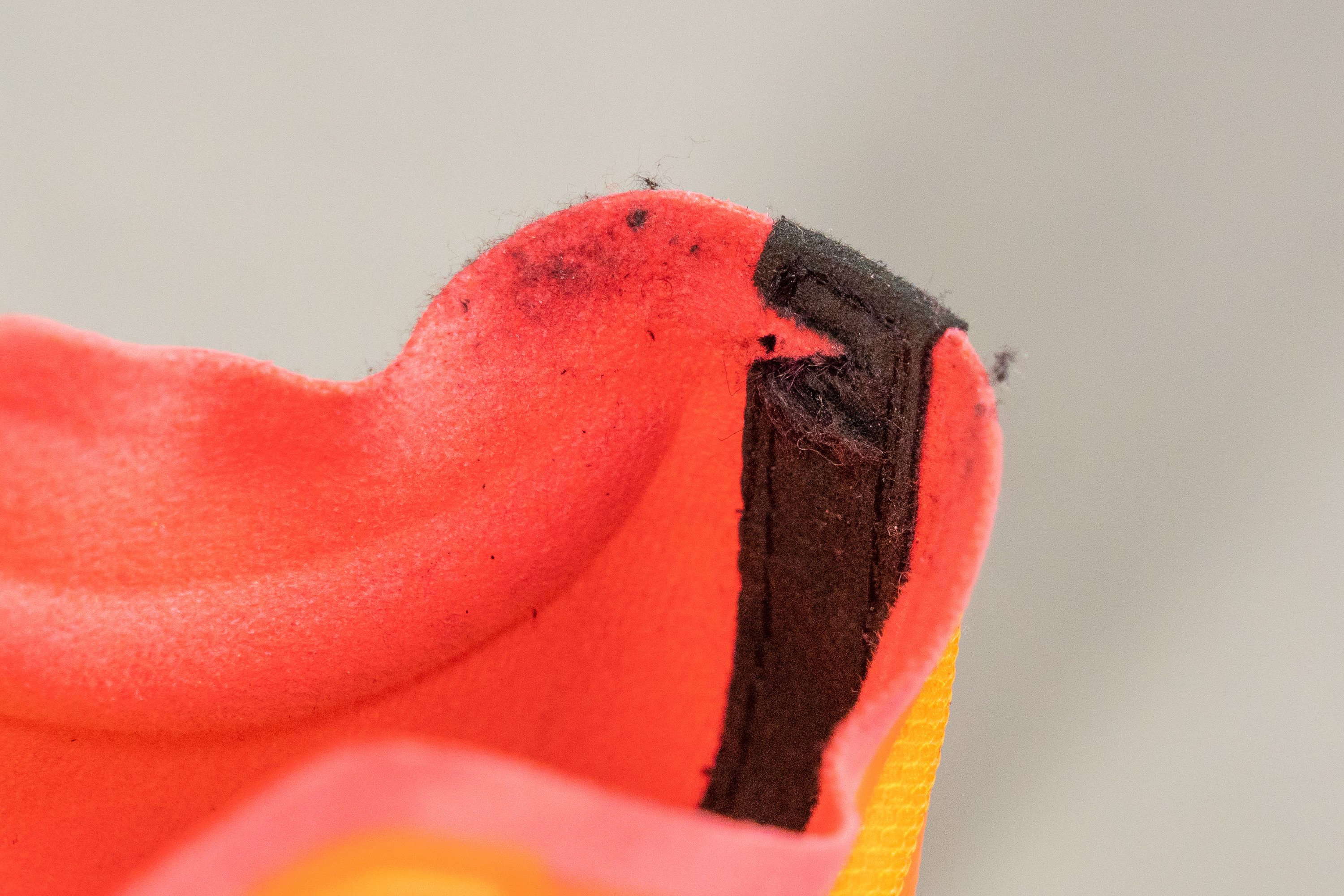
| Deviate Nitro Elite | 4 |
| Average | 3.4 |
Outsole hardness
Transitioning to the outsole, we observed a notably low value (71.8 HC) in our durometer test, which is typical—and desirable—for a racing shoe.
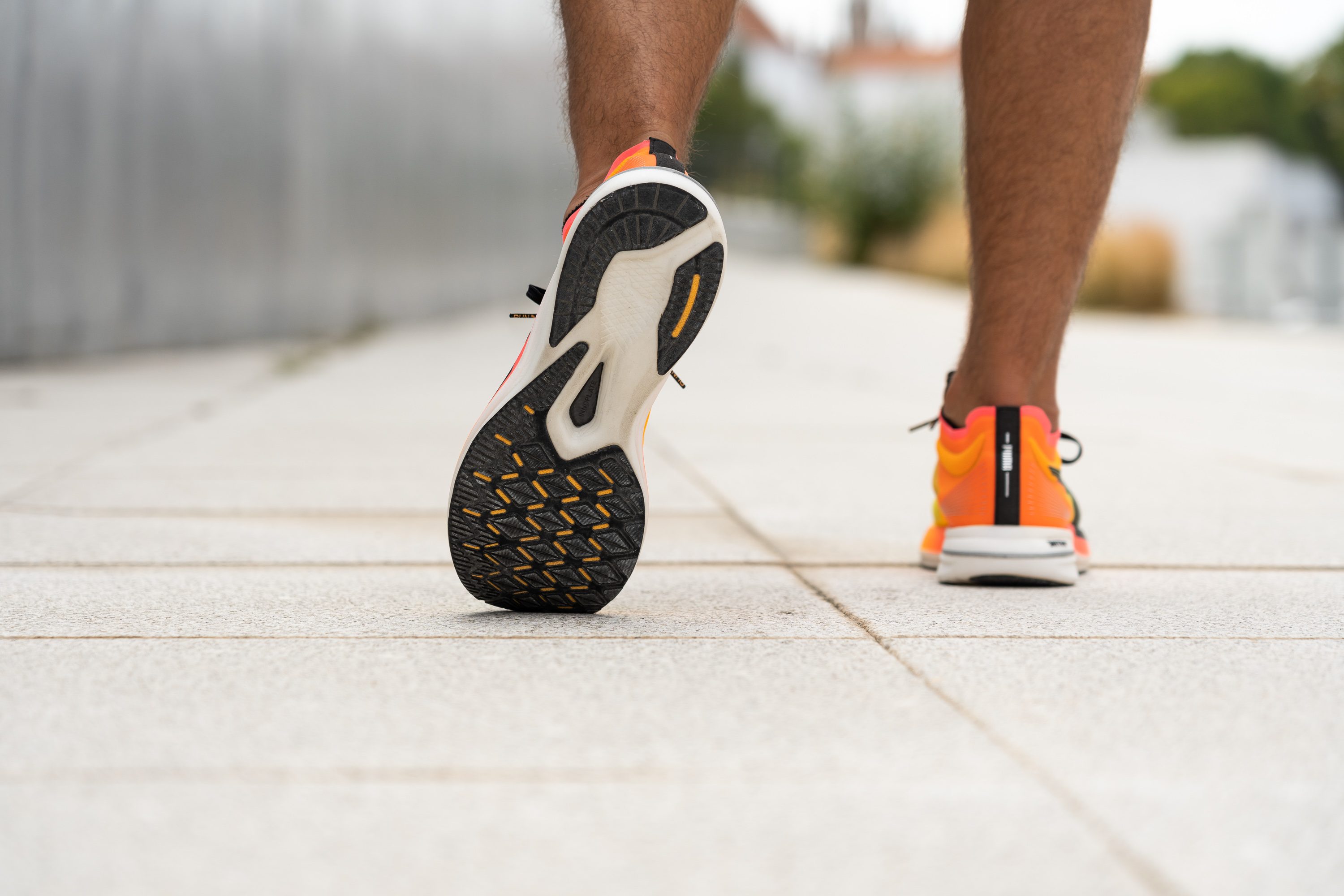
Similar to car or Formula 1 tyres, the softer the compound, the greater the grip. It's essential to remember this shoe isn't designed for everyday training—although PumaGrip it's a compound renowned for its durability, so it definitely can be used for that purpose.
Another standout feature of this PUMA shoe is the generous cover of rubber it boasts, more than you'll find on most racing shoes. This results in truly impressive durability, which makes this shoe also fantastic for interval training or running in other surfaces.
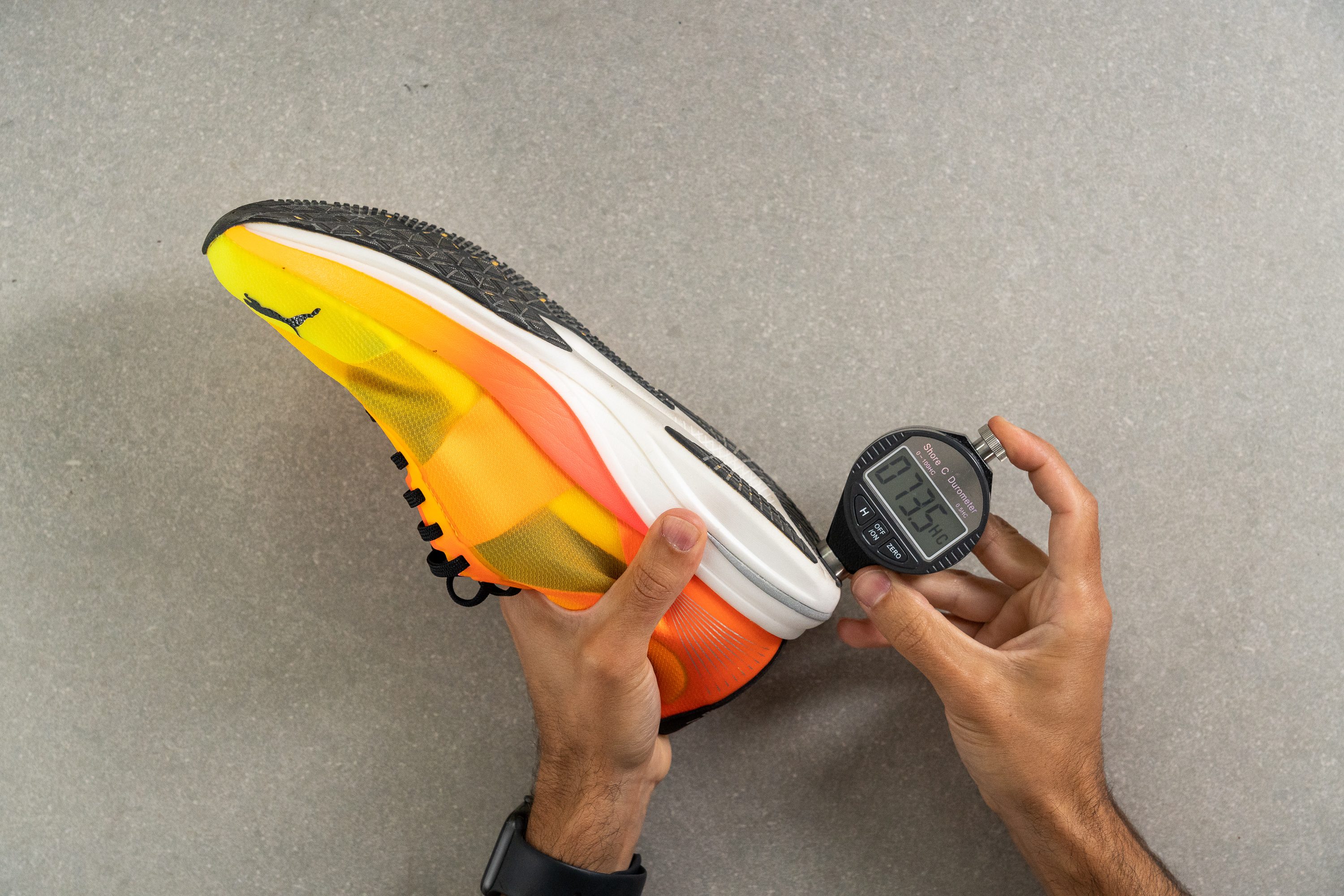
| Deviate Nitro Elite | 71.8 HC |
| Average | 79.2 HC |
Outsole thickness
Of course, a racing shoe equals thin outsole. Adding thicker rubber would increase weight, which isn't ideal when the goal is to race as quickly as possible. A measurement of 1.9 mm aligns perfectly with other world-class competition shoes that we also tested in our lab, such as the ASICS Metaspeed Edge+ or the Saucony Endorphin Pro 3.
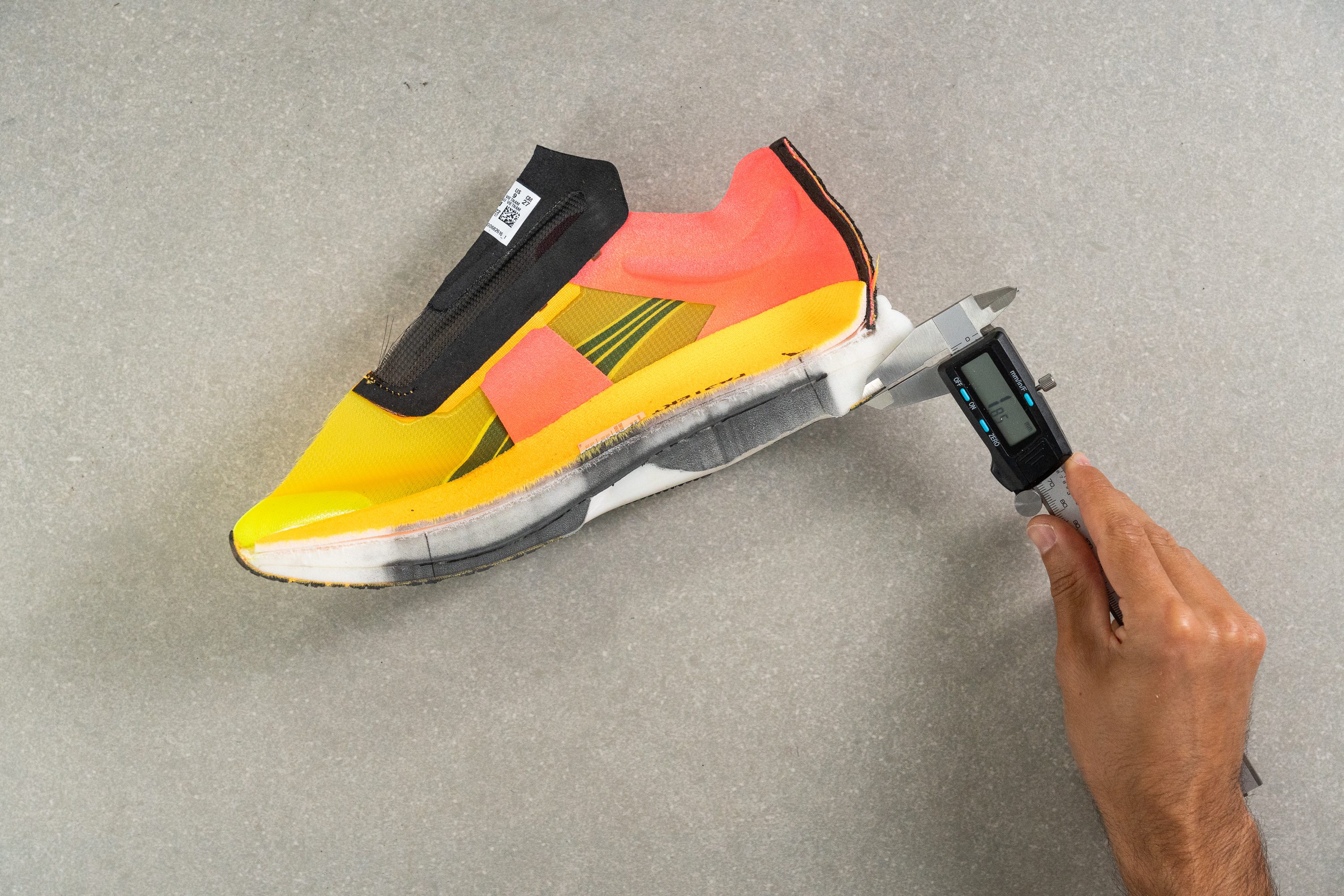
| Deviate Nitro Elite | 1.9 mm |
| Average | 3.2 mm |
Misc
Insole thickness
At 3.3 mm, the insole is leaner than what we usually find in the lab. However, just like happened with the outsole, the need to cut weight in a racing shoe dictates this approach. Every gramme counts, and indeed, the insole presents a good opportunity for such diet.
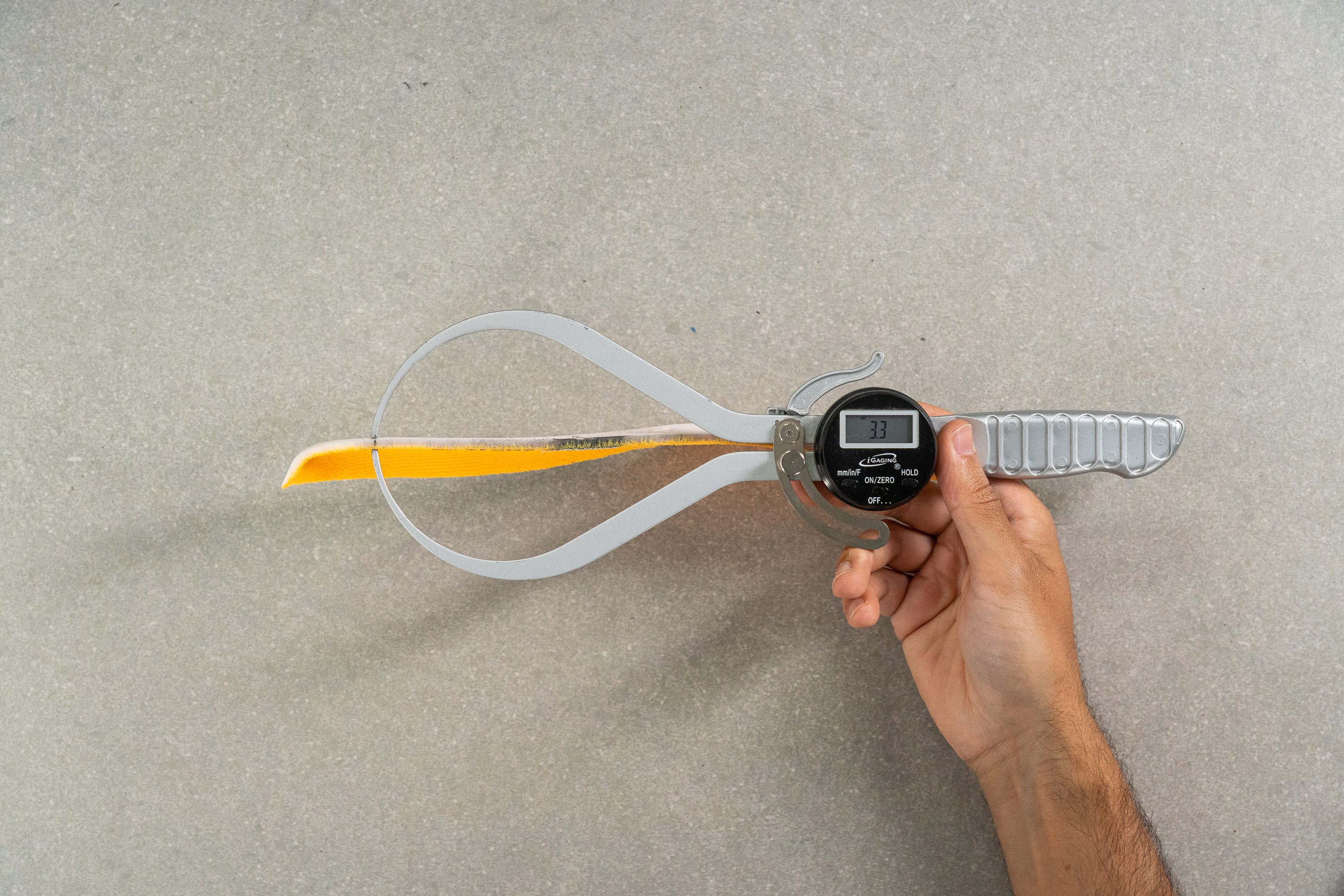
| Deviate Nitro Elite | 3.3 mm |
| Average | 4.5 mm |
Removable insole
Breaking away from the pack of racing shoes that often glue down their insoles—making them, in theory, non-removable—PUMA takes a different path. Third party insoles and orthotics are not a problem in the Deviate Nitro Elite.
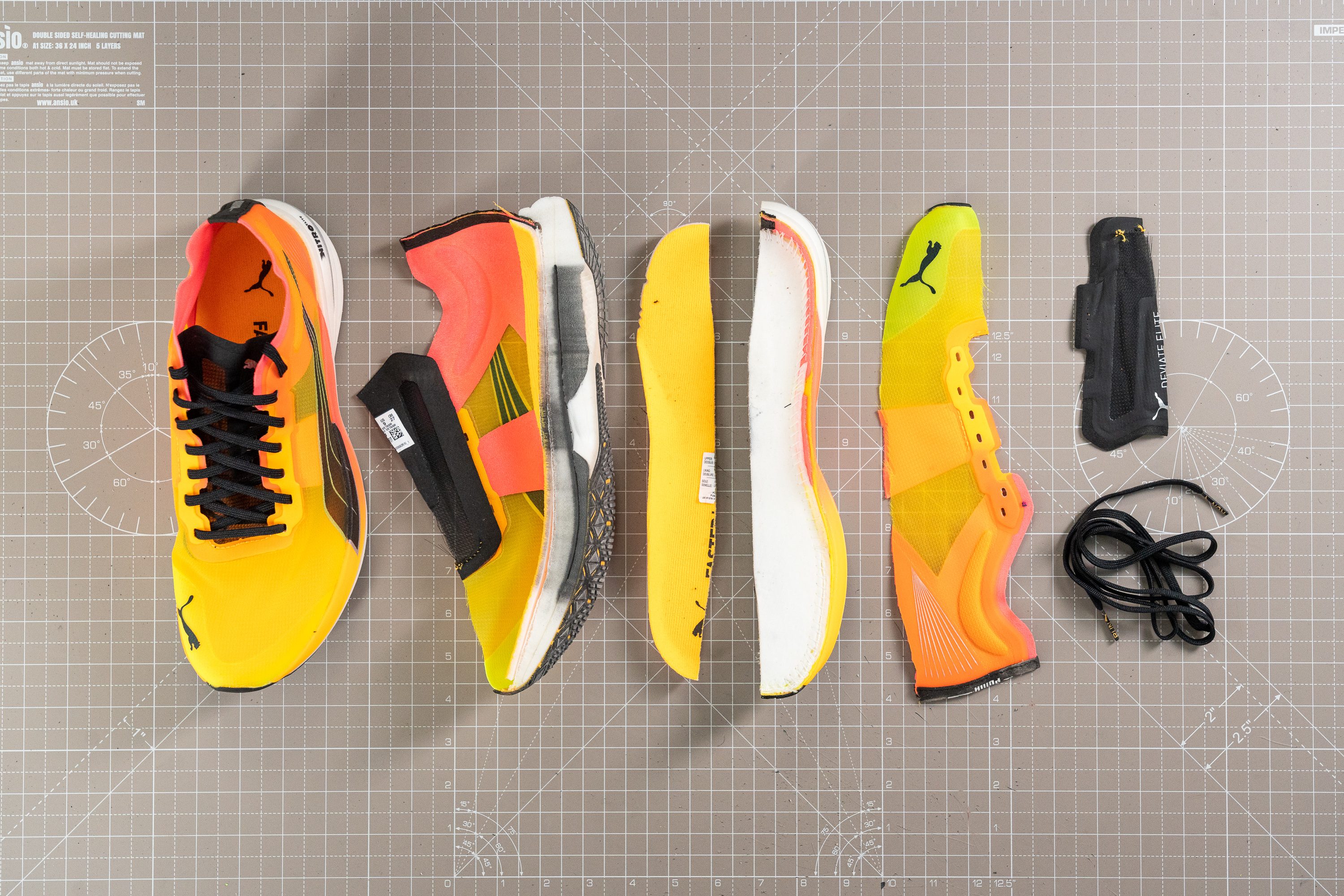
| Deviate Nitro Elite | Yes |
Midsole softness in cold (%)
Even after a 20-minute nap in our freezer, the Nitro Elite stayed as soft as a sponge at 19.9 HA.
However, there's a catch. While it's true the Nitro Elite remains soft in cold temperatures, it does harden up way more (34.7%) than its PEBA or TPEE competitors, which typically fall in the 5-15% ballpark. So, why does this happen?
The answer is quite simple! PEBA performs outstandingly under cold conditions, but EVA, unfortunately, does not. Since the Nitro Elite foam is a blend of PEBA and EVA, we observed a result that's pretty much what we expected—an average performance.
If you're interested in understanding more about how foams react to extreme temperatures, we have a detailed guide that covers everything you need to know.
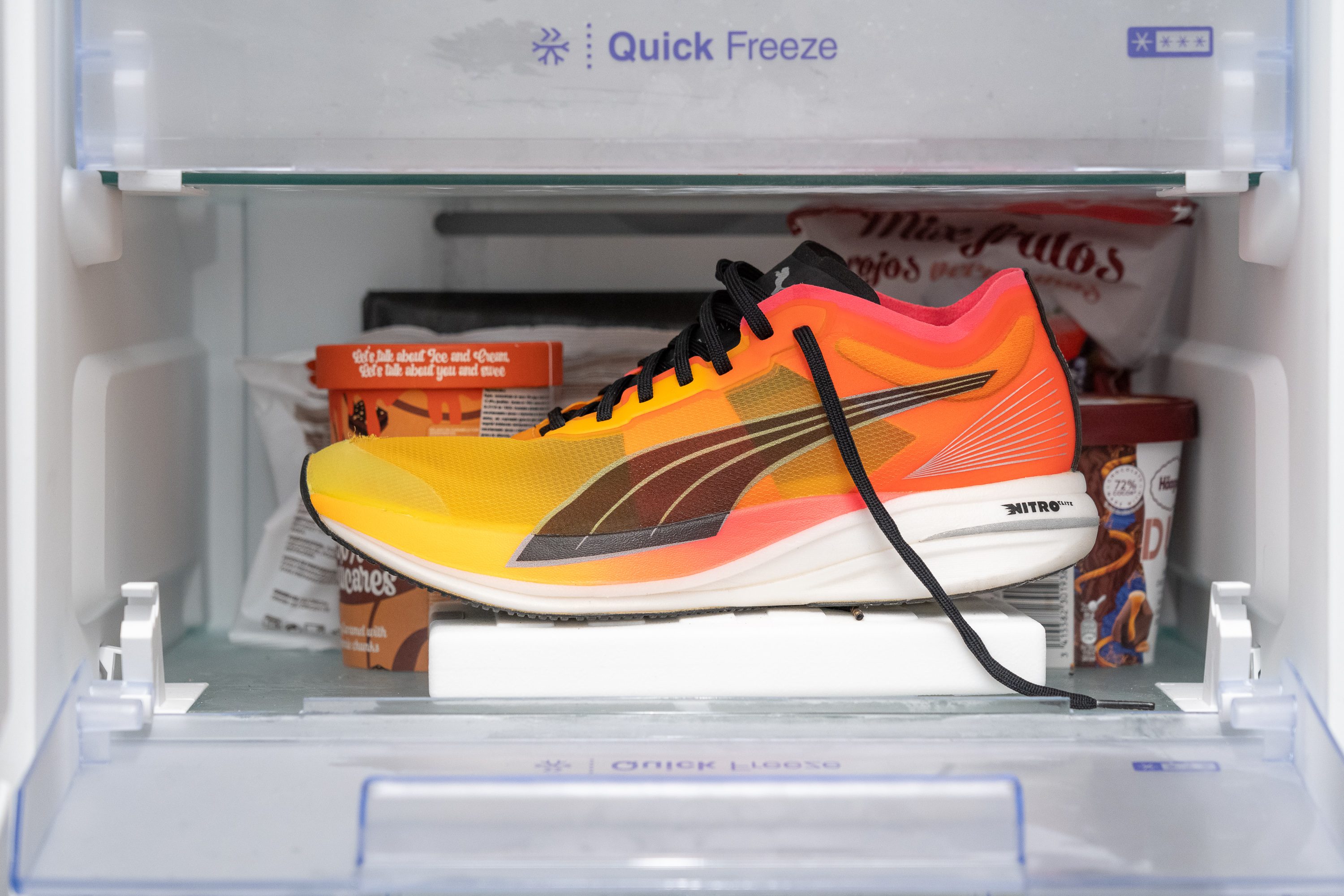
| Deviate Nitro Elite | 35% |
| Average | 24% |
Reflective elements
The Deviate Nitro Elite offers us high-visibility, eye-catching reflective details for our fast-paced night runs.

| Deviate Nitro Elite | Yes |
Tongue padding
Lace bite it's a common problem and it usually traces back to those paper-thin tongues in racing shoes. So imagine our reaction when we saw the Deviate Nitro Elite. Despite its racing approach, it sports a huge amount of padding in the tongue.
To paint a clear picture, let's crunch the numbers. This PUMA's tongue padding, at 5.1 mm of thickness, outpaces the competition by 4x or 5x. Let's put this into context:
- It's a whopping 4.2 mm thicker than the tongue in the Nike Vaporfly Next% 2
- It surpasses the ASICS Metaspeed Sky+ by 4.3 mm
- It leaves behind the Saucony Endorphin Pro 3 by a solid 3.9 mm
That's C-O-M-F-O-R-T... in a racing shoe!

| Deviate Nitro Elite | 5.1 mm |
| Average | 5.8 mm |
Tongue: gusset type
We've got to hand it to PUMA for their out-of-the-box thinking in many areas. Take the tongue gusset as an example. It's unique in that it's only fixed partially to the shoe on one side, leaving the other free. This unconventional approach isn't something we see every day in our lab.
| Deviate Nitro Elite | One side (semi) |

